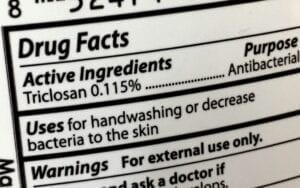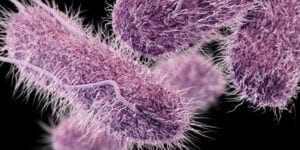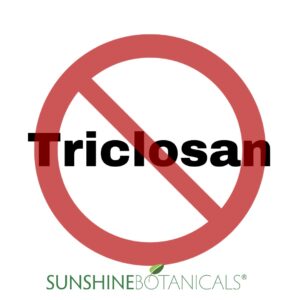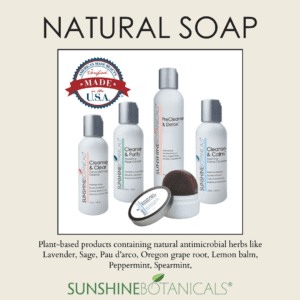
No other antibacterial agent is used as much in commercial products as triclosan, a fact which should be reassuring. Its popularity might lead you to believe that it has undergone extensive testing to be considered entirely safe and harmless for you and your family. But when you look a little closer at what we know and don’t know about this readily available ingredient, we find some conflicting information. So what’s the true story? Is triclosan a terrific additive to antibacterial soaps or a toxic agent that may do more harm than good?
Triclosan kills germs, but at what expense? The truth is disturbing. In the 1970s, the FDA was on the verge of banning the antibacterial from specific topical products. Still, it slid through the cracks and grew in availability because of its efficacy at battling bacteria. However, the concerns about its safety for people and the planet did not disappear.

An illustration depicts drug-resistant Salmonella serotype Typhi bacteria. – CDC
There are a number of reasons to avoid any topical applications of triclosan. Studies have shown that triclosan acts as an endocrine disruptor, meaning that it can dysregulate hormone balance, causing a huge range of serious health problems from infertility to cognitive changes. Research on animals has shown that triclosan may contribute to thyroid imbalance as well. It also encourages the rise of drug-resistant bacteria or ‘superbugs’ which are not destroyed by typical antibacterial formulas and represent a significant threat in modern medicine.
There is a great deal of evidence that no advantage is gained by using a triclosan-based product rather than a plain soap product. In fact, the FDA is now demanding that manufacturers of triclosan products like soaps and cleansers provide data to support the theory that it is more effective than washing with regular (not antibacterial) soap; it is not risky when used long-term.

Your skin is a living organism. It is an incredibly complex biome full of countless microorganisms and bacteria, many of which are beneficial and contribute to your overall health. A potent antimicrobial ingredient like triclosan poses a problem because it destroys not only any pathogenic bacteria but all the good prebiotics and probiotics, resulting in a net effect of weakening the skin’s (and the body’s) natural defenses. Antibacterial is not always better. In fact, the sterility of environments and the elimination of all bacteria may contribute to the rise of stubborn skin issues like eczema in recent years. There is no doubt that the potential adverse health effects of using triclosan far outweigh any possible benefit by a long shot.
Ingredient: Triclosan
Where Found: cleansers, soaps, body washes, shampoos, many personal care products, and even home-goods such as furniture and children’s toys.
Verdict: TOXIC
Side Effects: hormonal disturbance, destruction of beneficial bacteria, weakening of the immune system, creates ‘superbugs,’ environmental pollution.
Best Safe Alternatives:
- Plain soap and water with no ‘Drug Facts’ on the label
- Plant-based products containing natural antimicrobial herbs such as lavender, sage, pau d’arco, Oregon grape root, lemon balm, peppermint, spearmint, calendula, and St. John’s wort
- Cleansers like PreCleanse & Detox, Cleanse & Purify, Cleanse & Calm, Cleanse & Clear, Redness Relief Bar For Face & Body.
I can’t wait to show you more! Follow us on FB and sign up for our newsletter.
My passion is your Solution,
![]()

